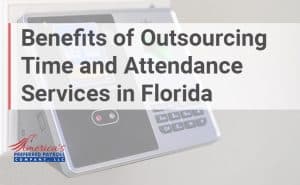It was not long ago when most Americans worked for the same employer for a decade, several decades, or even the entirety of their career. My, how times have changed! Today, people change jobs as frequently as they change hairstyles. In fact, some people have completely shifted out of traditional employment roles, choosing to become independent contractors, also known as 1099 workers. If you are curious as to how to process payroll for contractors, you are not alone. Our payroll processing specialists are here to help you navigate the maze that is contractor payroll processing.
Sweat the Small Stuff Paying Independent Contractors
Independent contractors are distinct from traditional W-2 employees in the context of financial compensation, benefits, and reporting to the IRS. Though some independent contractors make more money than W-2 in-house employees, such contractors are not eligible for the same benefits. The Internal Revenue Service (IRS) makes it quite clear that independent contractors are not official employees of the business. This means contractors are not paid through an employer’s payroll system in the same manner that regular in-house employees are paid. Instead, independent contractors are paid separately, meaning the money paid to these individuals can be classified as a business expense.
Fail to pay independent contractors properly and there is a chance the IRS will put your business under the microscope with an audit. It is important to note federal law states the minimum wage and pay for overtime must be paid to in-house W-2 employees yet these rules are not applicable to contractors. However, classifying someone who contributes their time and effort to your business as either a traditional employee or a 1099 contractor is not always exactly crystal clear. The individual’s independence within the working relationship and the level of control the company has over that individual are factored into the worker’s specific classification in the context of labor. When in doubt, lean on your payroll specialist and tax accountant for advice pertaining to worker classification.
Paying Contractors for Their Hard Work
Contractors can be paid with direct deposit, a tangible check, through PayPal, or through other legal means. However, each of these payments along with the dates of the payments and the contractor’s personal information must be meticulously recorded in your business’s files to ensure full accordance with the nuanced rules of the IRS. Furthermore, a W-9 form must be completed by the independent contractor. This form, also known as the Request for Taxpayer Identification Number and Certification, is to be completed by the contractor prior to the point at which he or she performs work for the business. This form provides the client/employer with the contractor’s Social Security number/tax identification number, legal name, and signature.
Once the W-9 form is completed, the responsibility for tax payment falls on the contractor as opposed to the client. This means taxes are not subtracted from the contractor’s payments. Rather, financial compensation is paid in full. The contractor is then required to report the earnings each financial quarter or at the end of the tax year and pay all related taxes.
It must be noted a client/business that pays a contractor in excess of $600 per year is legally required to complete and provide the Form 1099-MISC to that contractor by the last day of the year in which the work was performed. This form must also be provided to the IRS. The money paid to contractors is to be paid through the business’s accounts payable department.
Retain Contractors’ W-9 Forms and Payment Records for Posterity’s Sake
The W-9 form pertaining to an independent contractor’s labor should be retained in your company’s internal records for a minimum of four years. However, it is in your interest to retain this document and even make copies of it for posterity’s sake. Furthermore, businesses that outsource work to independent contractors should zero in on that individual’s business classification as stated on item #3 of the W-9 form. This information determines whether a 1099-NEC must be filed by the client in January. If the contractor fails to provide a legitimate taxpayer identification number in the first part of this form, the client business must deduct backup withholdings from that contractor’s earnings. If backup withholdings are not paid, the client will be legally liable for uncollected tax liabilities.
In other words, the devil is in the details when it comes to paying independent contractors and also payroll processing as a whole. Do not run the risk of making a single mistake when processing payroll for independent contractors and traditional employees. Instead of trying to piece together the puzzle of paying 1099 contractors on your own, let the proven contractor payroll specialists do the work on your behalf and you will be liberated to square your focus on your business.













